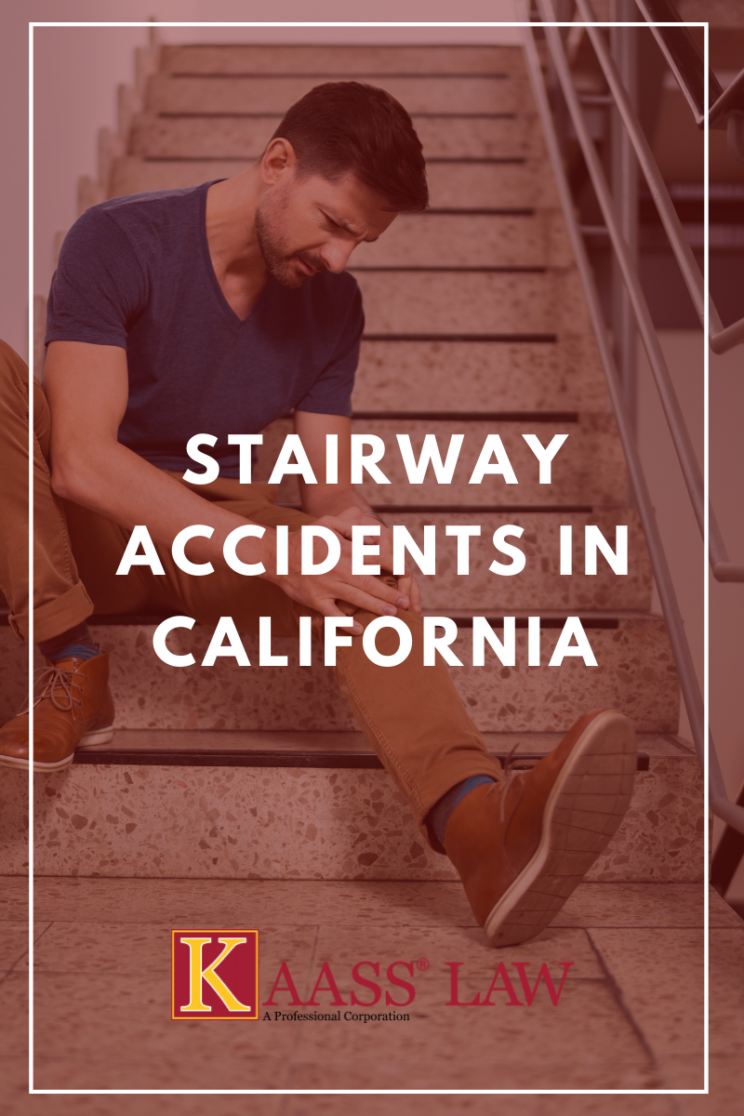Stairway accidents can be more dangerous than you might think. Most people don’t know it, but stairway accidents are the second leading cause of personal injury in the United States after auto accidents.
Some Common Reasons for Stairway Accidents
Here are some specific reasons that most stairway falls occur:
- Defective steps
- Slippery surfaces
- Inadequate lighting
- Icy or wet stairs
- Uneven stair height or depth
- Improper riders
- Faulty or damaged steps
- Defective handrails
Common Injuries Caused By Stairway Accidents
- Bruises and cuts
- Concussions or head injuries
- Muscle sprains and strains
- Soft tissue damage
- Broken bones
- Neck or back injuries
California Safety Regulations for Public Stairs
Falling on a stairwell can result in serious injuries or even death to the person. California has a number of safety code regulations concerning staircases. Common safety regulations include:
- Stairs serving an occupant load of more than 50 must have a width of at least 44 inches:
- Private stairways serving an occupant load of fewer than 10 must have a width of at least 30 inches
- Each step in a stairway must be between 4 and 7 ½ inches tall
- Each step must have a depth of at least 10 inches
- Private stairs serving less than 10 individuals and stairs leading to unoccupied rooftops may have stairs with a maximum height of 8 inches and a minimum depth of 9 inches.
- All stairs must be slip-resistant
- All stairs must be clear of all obstacles and be in good repair
- Circular stairways must have a minimum stair depth of 10 inches
- Every building with 4 or more stories must have an exit to the roof from one set of stairs
- Stairways must have at least 6 feet 6 inches of headroom from the step to the ceiling:
What Must the Plaintiff Prove in a Stairway Accident?
To prove the property owner’s fault the plaintiff must be able to establish the following:
- The owner of the premises or an employee of the owner caused the spill, worn or torn spot, or another dangerous stairway condition
- The owner of the premises or an employee of the owner knew or should reasonably have been aware of the dangerous condition but did nothing about it
- The owner of the premises or an employee neglected to remedy the stairway dangerous condition
- The injury incurred by the plaintiff was a direct result of the dangerous condition.
- The plaintiff suffered injury as a result of the dangerous condition of the stairways.
The court also takes into consideration whether the plaintiff had a reasonable purpose for being on the stairs, was acting recklessly and his carelessness contributed to the accident.
Glendale Personal Injury Attorney
If you or a loved one has been injured in a stairway accident, we invite you to contact our Glendale personal injury attorney at (310) 943-1171 for a free consultation.

